Related Research Articles
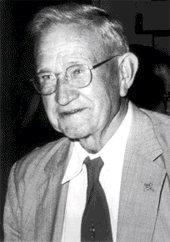
Edward Elmer Smith was an American food engineer and science-fiction author, best known for the Lensman and Skylark series. He is sometimes called the father of space opera.

John Wood Campbell Jr. was an American science fiction writer and editor. He was editor of Astounding Science Fiction from late 1937 until his death and was part of the Golden Age of Science Fiction. Campbell wrote super-science space opera under his own name and stories under his primary pseudonym, Don A. Stuart. Campbell also used the pen names Karl Van Kampen and Arthur McCann. His novella Who Goes There? was adapted as the films The Thing from Another World (1951), The Thing (1982), and The Thing (2011).
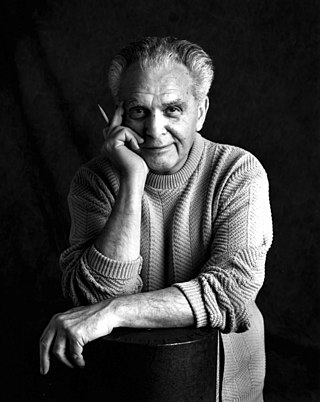
Jack Kirby was an American comic book artist, widely regarded as one of the medium's major innovators and one of its most prolific and influential creators. He grew up in New York City and learned to draw cartoon figures by tracing characters from comic strips and editorial cartoons. He entered the nascent comics industry in the 1930s, drawing various comics features under different pen names, including Jack Curtiss, before settling on Jack Kirby. In 1940, he and writer-editor Joe Simon created the highly successful superhero character Captain America for Timely Comics, predecessor of Marvel Comics. During the 1940s, Kirby regularly teamed with Simon, creating numerous characters for that company and for National Comics Publications, later to become DC Comics.
Pulp magazines were inexpensive fiction magazines that were published from 1896 until around 1955. The term "pulp" derives from the wood pulp paper on which the magazines were printed, due to their cheap nature. In contrast, magazines printed on higher-quality paper were called "glossies" or "slicks". The typical pulp magazine had 128 pages; it was 7 inches (18 cm) wide by 10 inches (25 cm) high, and 0.5 inches (1.3 cm) thick, with ragged, untrimmed edges. Pulps were the successors to the penny dreadfuls, dime novels, and short-fiction magazines of the 19th century.

Doc Savage is a fictional character of the competent man hero type, who first appeared in American pulp magazines during the 1930s and 1940s. Real name Clark Savage Jr., he is a polymathic scientist, explorer, detective, and warrior who "rights wrongs and punishes evildoers." He was created by publisher Henry W. Ralston and editor John L. Nanovic at Street & Smith Publications, with additional material contributed by the series' main writer, Lester Dent. Doc Savage stories were published under the Kenneth Robeson name. The illustrations were by Walter Baumhofer, Paul Orban, Emery Clarke, Modest Stein, and Robert G. Harris.

Lester Dent was an American pulp-fiction writer, best known as the creator and main writer of the series of novels about the scientist and adventurer Doc Savage. The 159 Doc Savage novels that Dent wrote over 16 years were credited to the house name Kenneth Robeson.
In American science fiction of the 1950s and '60s, psionics was a proposed discipline that applied principles of engineering to the study of paranormal or psychic phenomena, such as extrasensory perception, telepathy and psychokinesis. The term is a blend word of psi and the -onics from electronics. The word "psionics" began as, and always remained, a term of art within the science fiction community and—despite the promotional efforts of editor John W. Campbell, Jr.—it never achieved general currency, even among academic parapsychologists. In the years after the term was coined in 1951, it became increasingly evident that no scientific evidence supports the existence of "psionic" abilities.
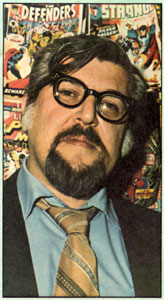
John Buscema was an American comic book artist and one of the mainstays of Marvel Comics during its 1960s and 1970s ascendancy into an industry leader and its subsequent expansion to a major pop-culture conglomerate. His younger brother Sal Buscema is also a comic book artist.
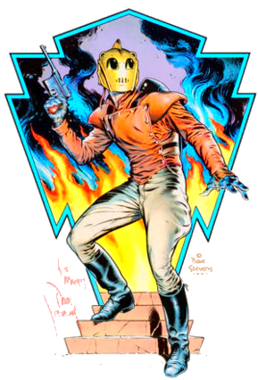
The Rocketeer is a comic book superhero, created by writer/artist Dave Stevens. The character first appeared in 1982 and is an homage to the Saturday matinee serial heroes from the 1930s through the 1950s.

The Amazing Adventures of Kavalier & Clay is a 2000 novel by American author Michael Chabon that won the Pulitzer Prize for Fiction in 2001. The book follows the lives of two Jewish cousins, Czech artist Joe Kavalier and Brooklyn-born writer Sammy Clay, before, during, and after World War II. In the story, Kavalier and Clay become major figures in the comics industry from its nascence into its Golden Age. Lengthy, Kavalier & Clay was published to "nearly unanimous praise" and became a New York Times Best Seller.

Unknown was an American pulp fantasy fiction magazine, published from 1939 to 1943 by Street & Smith, and edited by John W. Campbell. Unknown was a companion to Street & Smith's science fiction pulp, Astounding Science Fiction, which was also edited by Campbell at the time; many authors and illustrators contributed to both magazines. The leading fantasy magazine in the 1930s was Weird Tales, which focused on shock and horror. Campbell wanted to publish a fantasy magazine with more finesse and humor than Weird Tales, and put his plans into action when Eric Frank Russell sent him the manuscript of his novel Sinister Barrier, about aliens who own the human race. Unknown's first issue appeared in March 1939; in addition to Sinister Barrier, it included H. L. Gold's "Trouble With Water", a humorous fantasy about a New Yorker who meets a water gnome. Gold's story was the first of many in Unknown to combine commonplace reality with the fantastic.
Walter Brown Gibson was an American writer and professional magician, best known for his work on the pulp fiction character The Shadow. Gibson, under the pen-name Maxwell Grant, wrote "more than 300 novel-length" Shadow stories, writing up to "10,000 words a day" to satisfy public demand during the character's golden age in the 1930s and 1940s. He authored several novels in the Biff Brewster juvenile series of the 1960s. He was married to Litzka R. Gibson, also a writer, and the couple lived in New York state.
Ronald Wade Frenz is an American comics artist known for his work for Marvel Comics. He is well known for his 1980s work on The Amazing Spider-Man, particularly introducing the hero's black costume, and later for his work on Spider-Girl whom he co-created with writer Tom DeFalco. Frenz and DeFalco had earlier co-created the New Warriors in the pages of Thor.
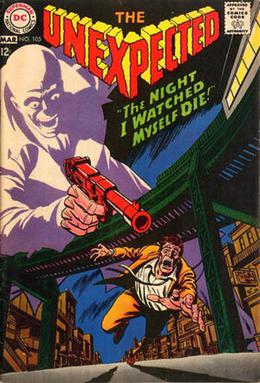
The Unexpected is a fantasy-horror comics anthology series, a continuation of Tales of the Unexpected, published by DC Comics. The Unexpected ran 118 issues, from #105 to #222. As a result of the so-called DC Implosion of late 1978, beginning in 1979 The Unexpected absorbed the other DC horror titles House of Secrets, The Witching Hour, and Doorway to Nightmare into its pages. Horror hosts featured in The Unexpected included The Mad Mod Witch, Judge Gallows, Abel, and the Witches Three.

Superhero fiction is a subgenre of speculative fiction examining the adventures, personalities and ethics of costumed crime fighters known as superheroes, who often possess superhuman powers and battle similarly powered criminals known as supervillains. The genre primarily falls between hard fantasy and soft science fiction in the spectrum of scientific realism. It is most commonly associated with American comic books, though it has expanded into other media through adaptations and original works.

Alex Niño is a Filipino comics artist best known for his work for the American publishers DC Comics, Marvel Comics, and Warren Publishing, and in Heavy Metal magazine.

Stan Lee was an American comic book writer, editor, publisher and producer. He rose through the ranks of a family-run business called Timely Comics which later became Marvel Comics. He was Marvel's primary creative leader for two decades, expanding it from a small publishing house division to a multimedia corporation that dominated the comics and film industries.
John Binder was a Golden Age comics creator and art packager. A fine artist by education, Binder had a prolific comics career that lasted primarily from 1937 to 1953, through his most concentrated work was through 1946. He was the creator of the original comic book Daredevil, for Lev Gleason Publications. Binder is credited with coining the term zero gravity as part of a 1938 article in Thrilling Wonder Stories. Binder's younger brothers were Earl and Otto Binder, collectively known as Eando Binder when writing science fiction.

The Astounding, the Amazing, and the Unknown is an alternate historical adventure novel written by Paul Malmont, the sequel to The Chinatown Death Cloud Peril (2007). It features real-life pulp magazine authors of the past as the heroes of adventures reminiscent of their favored genres. The book was first published in hardcover by Simon & Schuster and audiobook by Brilliance Audio in July 2011. The title is drawn from those of the magazines, Astounding Science-Fiction, Amazing Stories, and Unknown, for which his main protagonists wrote.
References
- 1 2 "Malmont, Paul". www.sf-encyclopedia.com. Retrieved 2019-08-04.
- ↑ Ron Hogan (24 June 2011). "Shelf Awareness for Friday, June 24, 2011". Shelf Awareness. Retrieved 27 October 2011.
- ↑ Jonah Raskin (4 January 2009). "'Jack London in Paradise' by Paul Malmont". SFGate.com. Retrieved 27 October 2011.
- ↑ "The Astounding, the Amazing, and the Unknown". Kirkus Reviews. 15 June 2011. Retrieved 27 October 2011.
- 1 2 Jeffrey Renaud (19 February 2010). "Paul Malmont gets "Savage"". Comic Book Resources . Retrieved 27 October 2011.
- ↑ Paul Malmont. "Backstory" . Retrieved 27 October 2011.